5. Along the biodiversity gradient of Mardi Himal
- lottaschultz
- Jun 3
- 4 min read
My weekend trip took me to the southern part of the Annapurna region (around 150km west of Kathmandu) for a trek to Mardi Himal basecamp. I started in Pokhara—a very nice city by a lake and surrounded by green hills. Compared to Kathmandu, Pokhara is much calmer and because it’s the gateway for many treks, it is an absolute hub for travellers and trekkers.
Early in the morning, I met up with guide, Sadin. After Nepali breakfast—potato curry, chapati, and honey—we drove to Kande, the starting point of our hike.
I am going to describe this hike from a slightly ecological perspective because it was really special to experience how the ecosystems changed as we hiked from about 1600 to 4500 m.
To give a bit of context: In mountains across the globe, environmental conditions like temperature, precipitation, and soil composition change rapidly with elevation. These environmental gradients create different ecological zones (so called elevational belts). It is often compared to the way ecosystems change from the equator to the poles, but instead of spanning thousands of kilometres, these transitions happen over relatively short vertical distance in mountains. This compression of ecosystems means that a wide variety of very different habitats exist close together, allowing an exceptional diversity of species to cooccur in a small area. That’s one of the main reasons why mountains are considered global biodiversity hotspots. Many of the species found here have evolved highly specialized adaptions shaped over long evolutionary timescales, to survive in their specific elevational zones.
We started at around 1,600 meters in subtropical forest. The trail passed a few farmhouses where people were growing rice and tea and keeping buffalo. A bit higher up (2,200-3000), the forest changed into oak and huge rhododendron trees. We saw a group of langurs in the trees (no photo evidence, unfortunately) and saw and especially heard an incredibly variety of birds. For example we spotted several different species of sunbirds (e.g., Mrs Goulds Sunbird). Their curved beaks are shaped for feeding on rhododendron nectar and are a nice example of how species adapt to their environments in mountains. These mid elevation zones (montane forest) are often the most biodiverse zone in mountains. One reason is that the environmental conditions here are less extreme than in higher zones, like the alpine. Montane forests also act as a transition belt between the lowland and high-altitude ecosystems, creating a variety of habitats that support many different species.
Above 3,000 meters, the rhododendron trees became smaller and more scattered. It was also super misty, so we didn’t get to see much of the surrounding mountains, but it was nice to watch how the mist was clinging on one side of the ridge while the other side was clearer. A great example of microclimates in mountains work: certain areas get wetter, others stay drier and the vegetation shifts accordingly. On one slope we still saw rhododendron patches on the other, more low growing sub alpine shrubs.
As we climbed higher the clouds got thicker. We only got a brief view of Annapurna South and Machhapuchare (Fishtail) through windows in the fog. Around 3300-3500 we reached the alpine zone (sensu PPF 😉). The alpine zone is less biodiverse than lower elevations, but the species that do live here are really unique. The have evolved highly specialized adaptations to survive the extreme conditions (e.g., cold temperatures, intense UV radiation, very short growing season).
We also stayed here over night at a camp. The teahouses are simple but cozy and since it was off season, there were only very few other trekkers around. And another highlight – the farmer at the camp had baby yak and gave us warm and fresh yak milk. We spent a nice evening with Dal Bhat and good conversations in the camp. And just before it got dark the clouds finally cleared and we saw the whole southern Annapurna range lit up. Unreal.
The next morning started early (3:30) for the last stretch to Mardi Himal Base Camp at 4500 meters. There was no big sunrise (still cloudy) but it didn’t matter. Hiking along the ridge, surrounded by ~7000m high snowy mountains was simply stunning! After soaking in the views and taking millions of photos we headed back to the camp for a quick breakfast.
The trail down was long and steep through Sherpa trails to Siding village (on the other side of the range from where we started). From there it was a partly very bumpy jeep ride back towards Pokhara.



One thing that really struck me was the scale of trekking infrastructure—not just on this trail, but across much of Nepal. Even though Mardi is relatively short and less-travelled, there were so many teahouses and places to stay along the way. Many of these are run by local families who once relied mainly on farming or livestock, but now host hikers because it’s often a more stable and accessible source of income. Of course, there are trade-offs. Growing tourism in the Himalayas brings huge pressure on local ecosystems and biodiversity (read more about it in this blog post). On the other hand if managed sustainably, trekking tourism can benefit mountain communities. I recently chatted with someone working in tourism development at ICIMOD, and she told me about efforts to revive old trade routes through ecotourism. The idea is to improve access for local people—to help them reach markets and their agricultural land, and at the same time provide trekkers with better trails and accommodations in the mountain villages.
Overall, I absolutely loved this hike—even with the cloudy weather. Hiking through such a long elevational gradient and seeing, hearing, and feeling the ecosystems change around me was a really special experience. Add to that the views on the highest mountains of the world and the great people along the way -I can’t wait to be back in the mountains soon again..













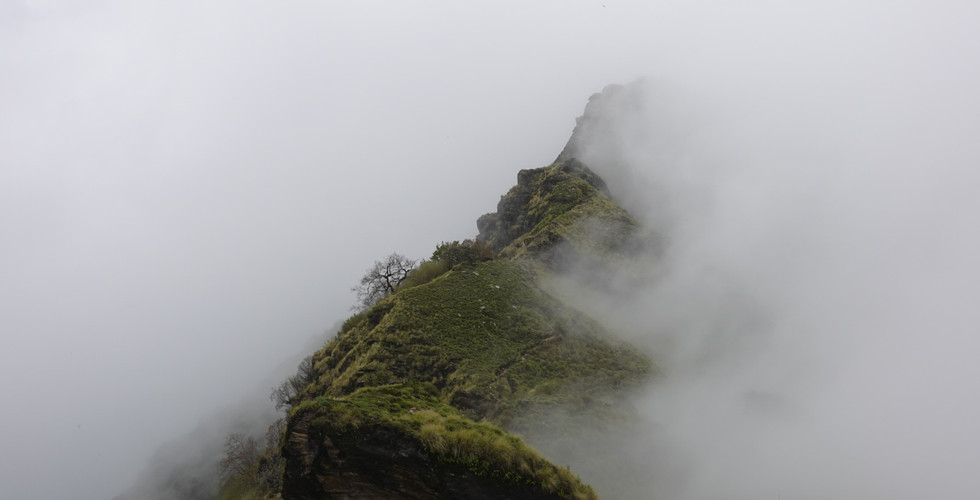

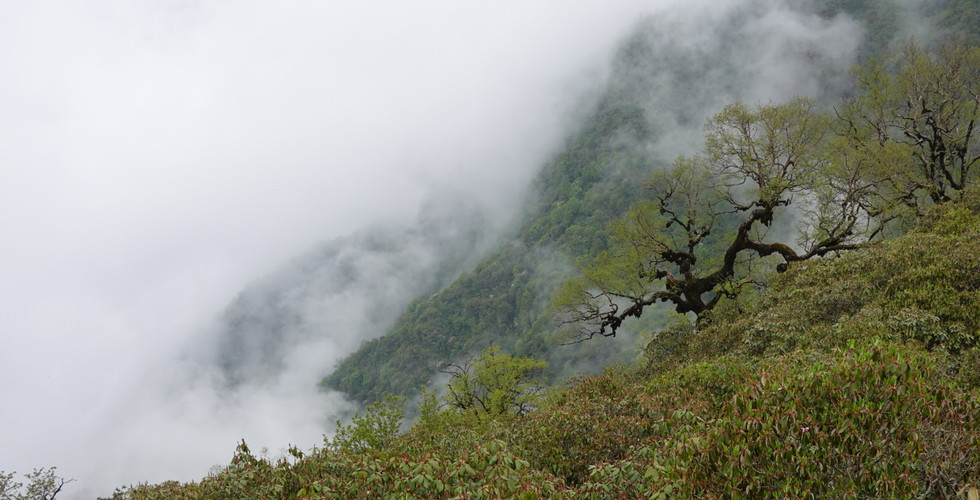





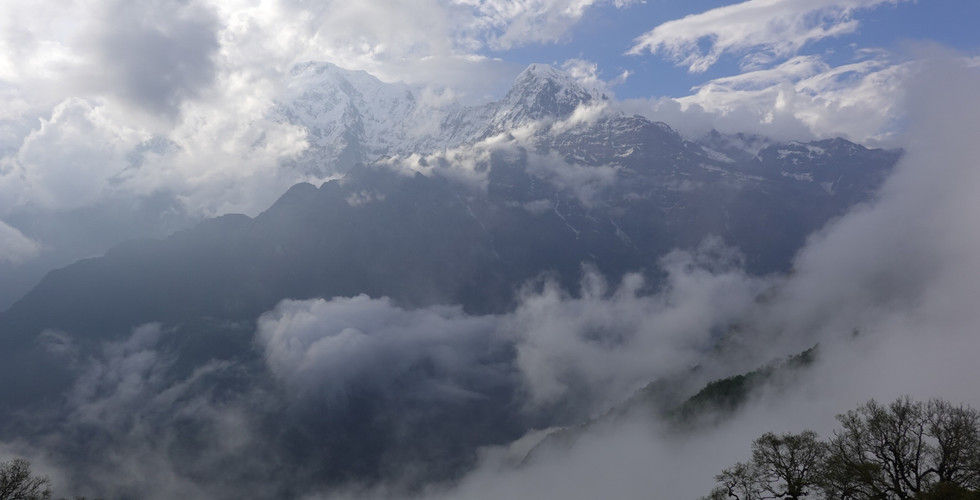





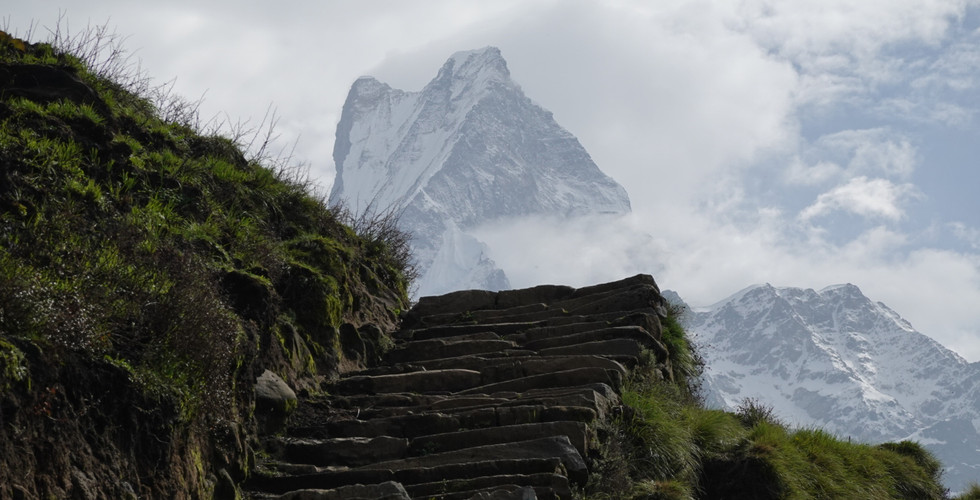

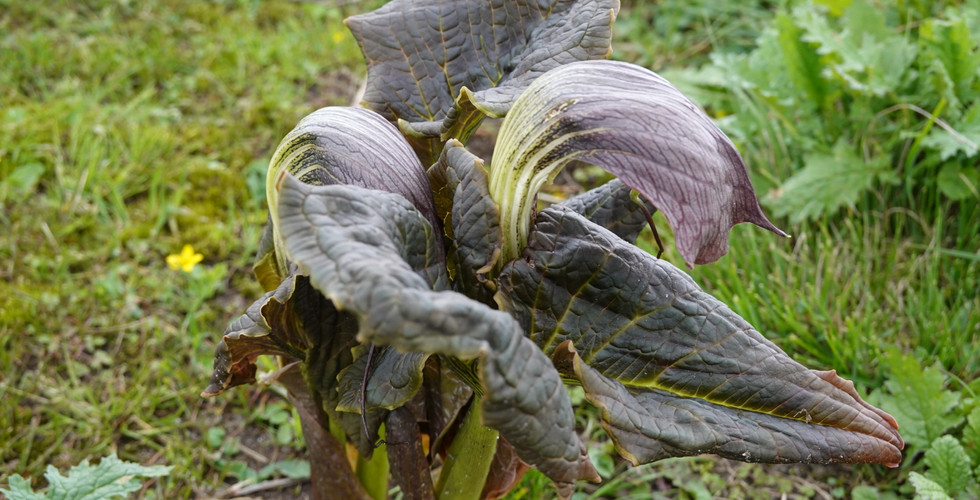

















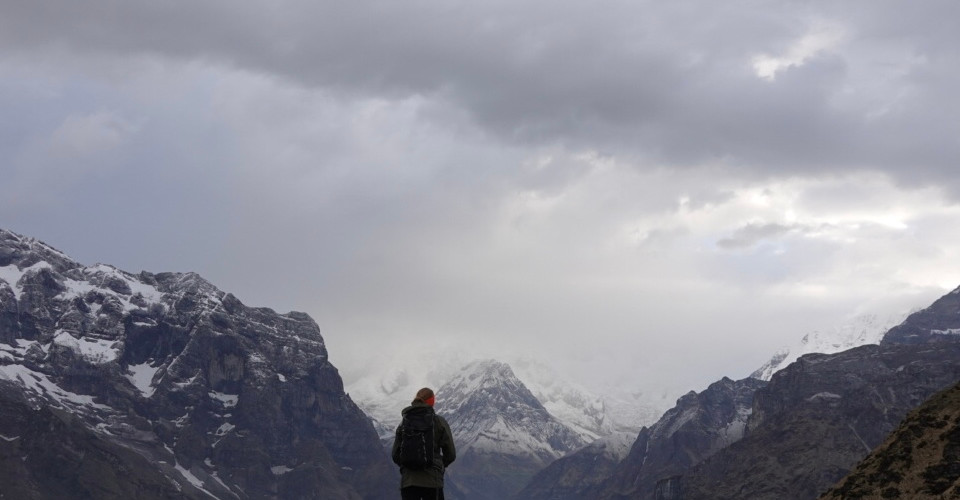



Stunning!